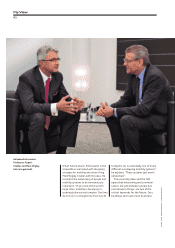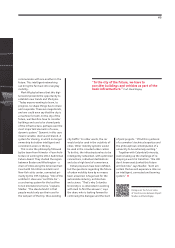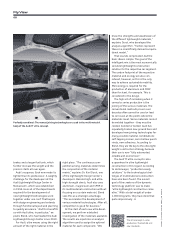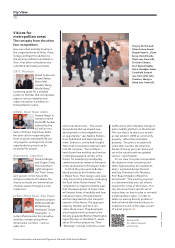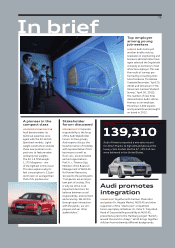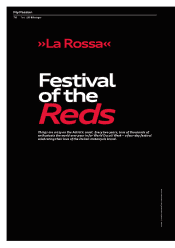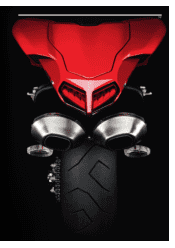Audi 2012 Annual Report Download - page 75
Download and view the complete annual report
Please find page 75 of the 2012 Audi annual report below. You can navigate through the pages in the report by either clicking on the pages listed below, or by using the keyword search tool below to find specific information within the annual report.
Fuel consumption and emission figures at the end of the Annual Report
My View
and social dimensions. “The visions
demonstrate that we should view
developments in the megacities as
an opportunity,” says Nadine Endress
from Audi Brand and Sales Develop-
ment. Endress is on the Audi Insight
Team that incorporates external input
into the company. “The architects
have shown how mobility can function
in densely populated centers in the
future, for example by intelligently
combining various means of transport
or the development of transport hubs.”
In 2012 the prize went to Boston-
based architects Eric Höweler and
J. Meejin Yoon. Their design came espe -
cially close to the intentions underlying
the Audi Urban Future Award: The
competition is meant to identify ways
that the development of major cities
will impact forms of mobility and how
individual means of transportation
will be integrated into the transport
network of the future. The approach
taken by Höweler and Yoon con-
siders these issues. They developed
a thoroughly mobile society for the
densely populated Boston/Washington
region (known as “BosWash”), where
about 50 million people live. Their
“Shareway” concept combines a main
trac artery with individual transport
and a mobility platform on the Internet.
The core idea is to share cars as well
as real estate in 2030 as community
property, rather than individual
property. “Our plan is an optimistic
vision that counters the American
dream of having your own home and
car in the suburbs with an updated
version,” says Höweler.
“In our view, this plan incorporated
the objective most concretely and
oers high potential for implement-
ation,” explained design theorist
and Jury Chairman John Thackara.
Prof. Rupert Stadler oered his
assessment: “The winning proposal
is a document that sets out what is
required for cities of the future. This
city dossier will be a specific set of
instructions on how to plan or remodel
a metropolitan region, in order to
tackle increasing density problems.”
Audi will work with the architects to
implement some of the ideas as part
of a pilot project. «
Be inspired by
the mobility concepts
of the future.
The jury for the Audi
Urban Future Award:
Jürgen Mayer H., Diana
Barco, Harish Hande
(front row, from left),
Christian Gärtner,
Prof. Rupert Stadler,
Yeşim Ustaoğlu, Adam
Greenfield (second
row, from left), John
Thackara, Wang Lu
(third row, from left).
Visions for
metropolitan areas
The concepts from the other
four competitors
How can urban mobility develop in
the congested areas of India, China,
Turkey and Brazil? In addition to
the winning architects at Höweler +
Yoon, four other contestants also
submitted fascinating concepts.
CRIT, Mumbai
Rupali Gupte and
Prasad Shetty
(from left)
created “Being
Nicely Messy,”
a planning guide for a mobility
system in Mumbai that incorporates
aspects such as migration and
urban renovation in addition to
transportation routes.
NODE, Pearl River Delta
Doreen Heng Liu
wants to relieve
the trac burden
endured by the
42 million resi-
dents of China’s Pearl River Delta.
Her plan calls for separating the
flows of goods and people: By run -
ning logistics underground, street
capacity above ground can be
reclaimed for people.
Superpool, Istanbul
Selva Gürdoğan
and Gregers Tang
Thomsen (from
right) designed
the “Park” trans-
port system. In the future this
will give residents of Istanbul the
chance to decide on communal use
of public spaces through a social
media tool.
Urban-Think Tank, São Paulo
Hubert Klumpner
(left) and Alfredo
Brillembourg
developed “Urban
Parangolé,” a
system that provides for innovative
mobility concepts along three-
dimensional corridors – such as
cable cars.
P H O T O S | A U D I AG
72


